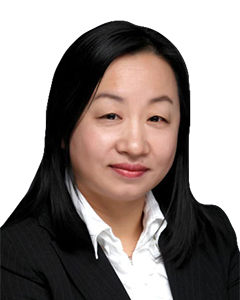Applicants generally have the right to decide how to write claims in patent application documents, which should be accepted as long as they do not violate relevant laws and regulations. From the perspective of an applicant, it is best for a claim to depict features different from the prior art at the lowest cost, and thus it is necessary to minimise the limit on the claims, to expand the scope of protection and maximise the patent value.

Patent attorney
Sanyou Intellectual Property Agency
From the perspective of the patent administration department, claims also need to meet various laws and regulations so that the scope of protection is determined and reasonable to safeguard the public interest. From the perspective of the court, the scope of protection of the claims needs to be determined to help define whether infringement occurs in patent litigation. Striking a compromise among these three perspectives needs to be considered when the claims are created, at the writing stage.
It can be seen from the provisions of the Patent Law that it has clear provisions for claims and specifications, but their functions and focuses are different. A claim is the refinement and summary of one or more implemented technical schemes, and it is the basis for determining the scope of patent protection. It clearly focuses on “limiting the scope of protection”, so as to clearly define the boundary between the protected scope and the unprotected scope.
The purpose of the specification is to provide the public with the technical information of the invention, and explain the claim. It clearly focuses on “the technical personnel in the field being able to accurately understand the content to be protected by the invention”, and finally enables technical personnel in the field to implement the invention without creative labour.
Therefore, the clarity of claims should not be understood from the perspective of technology implementation, but from the perspective of scope of protection. Specifically, for a certain claim, if the scope of protection defined by each technical feature is clear, then the claim is clear. Whether these technical features form implementable technical schemes should not be the main factor for deciding whether the claims are clear.

Patent attorney
Sanyou Intellectual Property Agency
Take the case of Shanghai Zhizhen Intelligent Network Technology Co Ltd filing a patent infringement lawsuit against Apple Inc as an example, the Supreme People’s Court (SPC) ruled Shanghai Zhizhen’s patent for the virtual assistant (known as Xiao-i) in China was valid.
For “forwarding the user statement to the corresponding servers according to the differentiation result, which servers include artificial intelligence server, query server or game server” under the patent claims filed by Shanghai Zhizhen, it is enough to understand that “the user statement is forwarded to any one of the artificial intelligence server, query server or game server after being judged by the filter of the chatbot system”, referring to the reasons provided by Patent Reexamination Board, Beijing First Intermediate People’s Court and Supreme People’s Court. It is obvious that the claim is an expression of the determination of protection scope. Therefore, the above-mentioned technical features in the claims are clear.
Beijing High People’s Court pointed out, in a judgment of second instance, that “the connection between the filter of chatbot system and the three servers is unclear”, which actually raises higher requirements on clarity from the perspective of technology implementation.
From the perspective of technology implementation, the technical feature itself does not clearly explain how to forward user statements to the corresponding server. However, these are only problems of forwarding accuracy at the technology implementation level. That is to say, the above-mentioned technical features in the claims can be regarded as clear if the scope of protection can be defined by means of prior art, which is also the thinking recognised by the SPC.
It can be seen, then, that the claims are refinements and summaries of one or more specifically implemented technical schemes, and are not equivalent to technical schemes. The requirements for the clarity of claims and the clarity of technology implementation are different, which is of reference significance for the expression of claims at the writing stage.
First, clearly distinguish the elements at the appeal level, and the elements at the implementation level. It is sufficient for the clarity of the claims to define the scope of protection. It is not necessary to write a claim into a complete technical scheme that can be implemented for the clarity of technology implementation – avoid adding too many technical details.
Second, from the perspective of avoiding writing restrictive features, when considering the expression of claims, abstract the common feature of each implementation method and use that common feature to construct the scope of protection. As for the clarity of this common feature, it cannot be considered just from a perspective of technology implementation.
Third, to avoid writing unnecessary features, if some features are prior art, and have no or little relevance to the technical problems solved, there is no need to add too much about them to the claims, in pursuit of clarity of technology implementation. Not adding unnecessary features of the prior art will not necessarily affect the clarity of the claims.
Furthermore, at the writing stage, it is sufficient to limit the clarity of claims, especially independent claims, to the clarity at the appeal level, and organise the independent claims with the least features or limitations, so as to maximise the patent value and retain the flexibility of modification at the examination stage.
In addition, once a patent application document is granted a patent right at the examination stage, it is relatively less likely that it will be deemed invalid, at the later invalidation stage, due to the clarity of the claims. As this case shows, even if the claim is considered to have clarity problems at the technology implementation level, it is difficult to determine it invalid on the ground of clarity at the invalidation stage.
Tao Haiping and Tian Yong are patent attorneys at Sanyou Intellectual Property Agency

16/F, Block A, Corporate Square
No.35 Jinrong Street, Beijing 100033, China
Tel: +86 10 8809 1921 / 8809 1922
Fax: +86 10 8809 1920
E-mail:





















